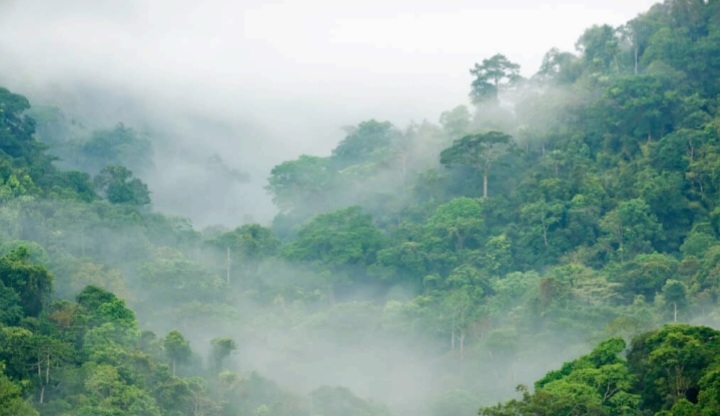A Look at the World’s Most Humid Nations and How They Thrive in Moist Environments

By Faridat Salifu
In a world characterized by diverse climates and atmospheric conditions, some countries stand out for their exceptionally high humidity levels.
The top 12 most humid countries in the world, including the Maldives, Singapore, Malaysia, Colombia, Papua New Guinea, Indonesia, Myanmar, Liberia, Thailand, Vietnam, Nigeria, and India, share a common trait – a pervasive presence of moisture in the air that shapes their cultures, lifestyles, and even architectural choices.
The Maldives – A Tropical Paradise Shaped by Humidity
The Maldives, known for its stunning coral atolls and turquoise waters, sits atop the list as the most humid country globally. Its equatorial location in the heart of the Indian Ocean means warm ocean currents constantly infuse the atmosphere with moisture.
This humidity is not just a climatic characteristic but an integral part of daily life, influencing everything from architecture to cuisine.
Singapore – Urban Oasis in a Humid Climate
Singapore, the second most humid country, has masterfully integrated its humid climate into daily life. Its modern urban design and lush green spaces, like the Gardens by the Bay, reflect this harmonization with humidity.
The city-state’s architecture provides respite from the moist air, and locals have adapted breathable clothing.
Malaysia – High Humidity Nurtures Diverse Ecosystems
Malaysia’s equatorial location fosters humidity levels exceeding 80%. This humidity plays a pivotal role in sustaining its diverse ecosystems, from dense rainforests to unique plant and animal species. The humid embrace of Malaysia’s climate deeply influences its culture and daily life.
Colombia – Breathtaking Landscapes Amid High Humidity
Colombia’s diverse geography and equatorial position result in consistently high humidity levels. While humidity contributes to lush rainforests and fertile valleys, it also poses challenges for infrastructure and historical preservation.
The fusion of traditions, biodiversity, and humid climate creates a unique blend in Colombia.
Papua New Guinea – Adapting to the Humid Environment
Papua New Guinea, nestled in the southwestern Pacific Ocean, embraces its high humidity. The dense rainforests thrive on moisture, housing unique plant and animal species.
Indigenous communities have developed deep relationships with these ecosystems, relying on them for sustenance and cultural expression.
Indonesia – Islands Shaped by Humidity
Indonesia’s thousands of islands are enveloped in humidity year-round due to its equatorial position.
While humidity nourishes lush landscapes and vibrant coral reefs, it poses challenges for preserving historical architecture and maintaining comfortable living conditions.
Myanmar – Humidity Woven into Heritage
Myanmar’s equatorial location and diverse landscapes contribute to high humidity, especially during the monsoon season.
Humidity weaves its way through ancient temples, bustling markets, and vibrant communities. It’s an essential part of the nation’s history and culture.
Liberia – Thriving Amid High Humidity
Liberia, along West Africa’s coast, deals with consistently high humidity due to its equatorial position. The nation’s tropical rainforests and unique wildlife thrive in this environment.
Liberians have adapted with ventilation in architecture, lightweight clothing, and vibrant cultural celebrations.
Thailand – Coexisting with Palpable Humidity
Thailand’s tropical climate ensures high humidity levels year-round. The nation’s ability to adapt to this climate is evident in its architecture, food culture, and bustling street life.
Traditional homes prioritize ventilation, and cuisine mirrors the humid landscapes.
Vietnam – Harmony with High Humidity
Vietnam’s tropical monsoon climate brings abundant moisture and high humidity levels.
The country’s diverse landscapes, from rice fields to urban centers, are shaped by humidity.
Vietnamese society embraces its humid identity through cultural celebrations, architectural designs, and cuisine.
Nigeria – A Warm, Humid Cultural Landscape
Nigeria’s tropical climate, influenced by the West African monsoon, keeps humidity constant. Traditional festivals, musical celebrations, and markets thrive in this humid environment.
Ventilation in architecture, lightweight clothing, and an enduring connection to heritage are key aspects of Nigerian life.
India – The Monsoon’s Influence on Culture
India’s diverse landscapes and rich culture are influenced by its humid climate, largely due to the monsoon. Traditional architectural designs prioritize natural ventilation, cuisine takes on unique flavors in moist air, and the monsoons support agriculture. India’s humidity shapes its identity, connecting nature and culture
High humidity levels are not merely climatic features; they are integral components of these nations’ identities. From architecture designed for ventilation to culinary traditions and vibrant cultural celebrations, these 12 countries have found innovative ways to adapt to and thrive in their humid environments.
As they continue to celebrate their heritage and protect their ecosystems, these nations prove that embracing high humidity can lead to unique and vibrant ways of life.
